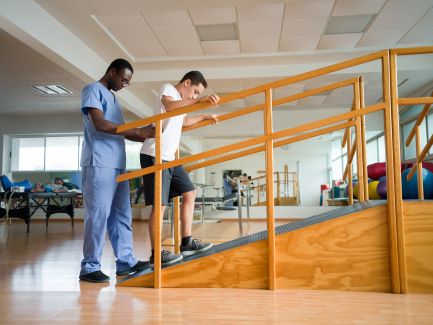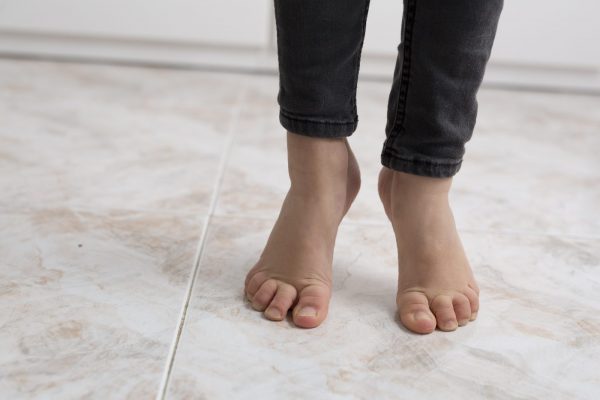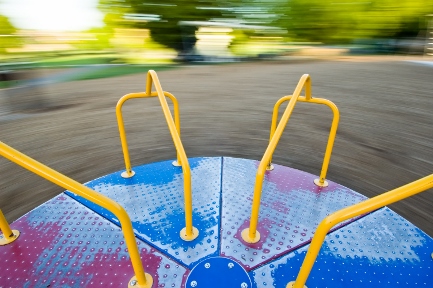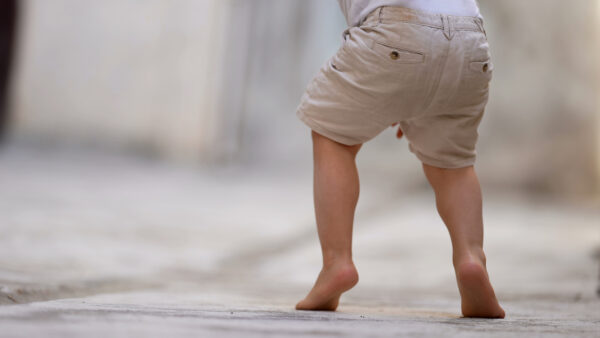Download the brochure for complete course details.
Would you like to increase your skill with orthotic recommendations? Are you interested in increasing your treatment repertoire for the foot and ankle for pediatric and adult patients with neurological, developmental and/or orthopedic diagnoses? This course presents a movement systems approach to management of the foot and ankle. Using a kinesiopathological lens, participants examine the effect of repeated movements, sustained alignments, cumulative micro-trauma, and altered relative flexibility on the function of the ankle. This course presents a comprehensive approach to care based on differential diagnosis, while examining the evidence for interventions which maximize the resiliency of the ankle complex through skeletal maturation and into adulthood. Participants learn hands-on skills for an integrated approach including mobilizations to promote adaptive relative flexibility; improving intrinsic stability through strengthening of the “foot core;” and interventions to positively impact neuroplasticity. Participants also actively use the ICF model to guide recommendations for targeted use of the external support of orthoses and casts to guide adaptive tissue-specific stresses.
OBJECTIVES:
- Recognize the interplay of musculoskeletal and neuromuscular influences on foot and ankle dysfunction.
- Interpret a detailed foot and ankle examination including gait dynamic, neuromotor function, and musculoskeletal findings.
- Develop a comprehensive plan of care for the foot and ankle to improve gait in the context of supporting best structural outcome.
- Select treatment techniques to address relative flexibility and promote progressive strengthening in foot and ankle for function.
- Recommend orthotic interventions to maximize short- and long-term functional gait skills.
Schedule – Day 1
Section 1: 2 hours, 30 minutes
• Lecture: Introduction and Terminology (with polls)
• ACTIVITY: Terminology Worksheets
• Building a Model of Foot and Ankle Function
- Requisites for therapeutic gait
- Functional anatomy of the foot and ankle
- Kinesiopathological model
- The ankle as a movement system
- Impact of pediatric, neurologic, orthopedic health conditions
- Function of Foot Intrinsics: The “Foot Core”
• Do We Need to Intervene?
- Cultures of intervention
- Review of relevant evidence
• Impact on developing systems: The Developmental Kinesiopathological Model (DKM)
• ACTIVITY: Developing goals at multiple ICF levels, Developing DKM Goals
• LAB: Musculoskeletal Key Tests: Dorsiflexion Stress Test and Talo-crural Axis Test
Section 2: 3 hours, 15 minutes
• Lecture: Movement System Analysis for the Foot and Ankle
• Lecture: Movement System Analysis for the Foot and Ankle
- Neuromotor Exam
- Sensory/Perceptual and Pain Exam
- Relevant Systems and Individual Qualities
• Movement System Analysis for the Foot and Ankle: Gait
• ACTIVITY: Case Examples using the Movement System Analysis for the Foot and Ankle
• Interventions and Evidence: Maximizing the resiliency and resources of the foot and ankle complex
- Joint Mobilizations to improve ankle mobility and relative flexibility
- Soft tissue mobilizations to improve ankle mobility and relative flexibility
Schedule – Day 2
Section 1: 2 hours, 15 minutes
• LAB: Hindfoot mobilizations
• LAB: Supination and pronation progressions Improving Motor Control and Strength of the foot and ankle
• Improving Motor Control and Strength of the foot and ankle
- Strategies to improve motor learning
• LAB: resistance, taping, novel task for motor learning
• Retraining patterns of recruitment and tonic contraction: emphasis on stability in the “foot core” and eccentric gastrocsoleus
• LAB: Skill building: Progressive Resistive Exercises for the foot core for foot core and eccentric control
• The Role of Neuroplasticity in Foot and Ankle Function
Section 2: 2 hours, 30 minutes
• Interventions to address neuroplastic changes
- Pain neuroscience education for the foot and ankle
• Use of orthoses to support neuromotor and musculoskeletal rehabilitation and development
- Goals of orthotic intervention
- Orthotic prescription versus design
- Orthotic prescription based on musculoskeletal exam
• Orthotic design based on Movement System Analysis findings
- Orthotic groups
- Gait diagnosis groups
- Designing support: Coronal, Sagittal, and Transverse Planes
• ACTIVITY: Video case studies to apply course concepts, presentation to group for discussion
Amanda Hall, PT, MPT, PCS, began teaching clinical education with serial therapeutic casting courses, and has since developed additional coursework based on an integrative approach to treatment for patients with pediatric and neurological health conditions. Her clinical practice is at the Rehabilitation and Specialized Care of Children’s National Hospital (formerly the HSC Pediatric Center) in Washington, DC, where she specializes in treating “outliers” and patients with complex presentations. Her framework is grounded in PNF principles, therapeutic alliance, neuroplasticity, manual therapy, therapeutic gait, and developmental kinesioplasticity. Her framework has a strong focus in patient-centered treatment and adaptive design. As a result, she has received international media attention as the “Madcaster.” Notable presentations include the Combined Sections Meeting of the American Physical Therapy Association, the APTA Pediatrics Annual Conference, and at the National Institutes of Health. She graduated with her Master of Physical Therapy from the University of Washington in 2001 and received her Board-Certification as a Pediatric Clinical Specialist in 2010.
Financial Disclosure: Amanda Hall receives an honorarium from Education Resources, Inc.
Non-Financial Disclosure: Amanda Hall has no relevant non-financial relationships to disclose.
Once you purchase an online course you will have access to the course materials. If you have purchased this course, please ensure you have logged in to your account in order to take the exam.
Once you purchase an online course, you will have the opportunity to take an exam to test your retention of the material. If you have purchased this course, please ensure you have logged in to your account in order to take the exam. The exam must be completed with a pass rate of 80% or more in order to receive your certificate of attendance.
Continuing Education Hours for disciplines not listed below: 11.0 contact hours (1.1 CEUs). Intermediate level. License #______________.
Course meets the basic criteria of the MD Board of Physical Therapy Examiners for 1.1 CEU's, 11 contact hours. Approval #2209-41 by the NJ State Board of Physical Therapy Examiners for 11 CEC's. Approved sponsor by the State of IL Department of Financial and Professional Regulation for Physical Therapy for 13 contact hours. Approved provider by the NY State Board of Physical Therapy for 13 contact hours (1.3 CEUs). Education Resources is an approved agency by the PT Board of CA for 11 contact hours. Approved by the APTA Kentucky, A Chapter of the American Physical Therapy Association, for 11 Category 1 contact hour(s). Expiration Date: 3/6/25, approval #CS61-2023-APTAKY. This activity is provided by the TX Board of PT Examiners accredited provider #2210017TX for 11 CCUs and meets continuing competence requirements for PTs and PTAs licensure renewal in TX. 11 hours of this course qualify towards the discipline-specific hours for the 20-hour requirement for NDTA re-certification. They do NOT qualify towards the 8-hour NDTA Instructor requirement for re-certification.
Education Resources Inc., 266 Main Street, Suite 12, Medfield, MA 02052 | 508-359-6533





